Contents
- 1 Introduction: Discovering France’s Best-Kept Secrets
- 2 1. Éguisheim: The Storybook Village of Alsace
- 3 2. Collioure: Where the Catalan Spirit Shines
- 4 3. Rocamadour: Clifftop Pilgrimage and Heavenly Views
- 5 4. Conques: Medieval Marvel at the Edge of the Forest
- 6 5. Île de Porquerolles: The French Riviera’s Secret Island
- 7 6. Saint-Cirq-Lapopie: Perched Over the Lot River
- 8 7. Vannes: Brittany’s Walled Wonder
- 9 8. Monts d’Arrée: Brittany’s Mythical Mountains
- 10 9. Saorge: Balcony Village Over the Roya Valley
- 11 10. Salers: Timeless Stone in the Heart of Auvergne
- 12 Where to Stay: Cozy Guesthouses and Family-Run Inns
- 13 Local Eats: Regional Dishes You Won’t Find Elsewhere
- 14 Timeless Traditions: Fêtes, Markets, and French Savoir-Faire
- 15 How to Travel Respectfully and Sustainably in Hidden Spots
- 16 Planning Your Trip: Handy Tips from Insiders
- 17 Conclusion: Step Off the Beaten Path and Rediscover France
- 18 Got questions about Hidden Gems in France? Here are the answers travelers look for most
Introduction: Discovering France’s Best-Kept Secrets

Hidden gems in France aren’t just legends—they’re real places, sparkling far from well-trodden paths. France has so much more than Eiffel Towers and Louvre selfies. Beyond its famous cities and attractions, such as the picturesque villages in the Loire Valley, there are secret nooks stitched together by history, nature, and true local spirit. If you’re willing to look, you’ll find a different, deeper French experience—one that hums with life beyond souvenirs and postcards.
Why Go Beyond Paris? Unlocking the Heart of Real France

Paris has beauty, museums, and a glittering nightlife, but it’s only one slice of a much bigger pie. Outside the capital, picturesque villages and towns like those in the Loire Valley keep old traditions, ancient buildings, and local recipes alive. They show off France’s true personality, rich in regional pride and warm welcomes. Exploring beyond Paris means tasting food you won’t find in city cafés, walking streets untouched by crowds, and seeing daily life as locals know it. It’s here in the countryside, at small markets or hilltop villages, where France’s soul reveals itself.
How Locals Define a True “Hidden Gem”
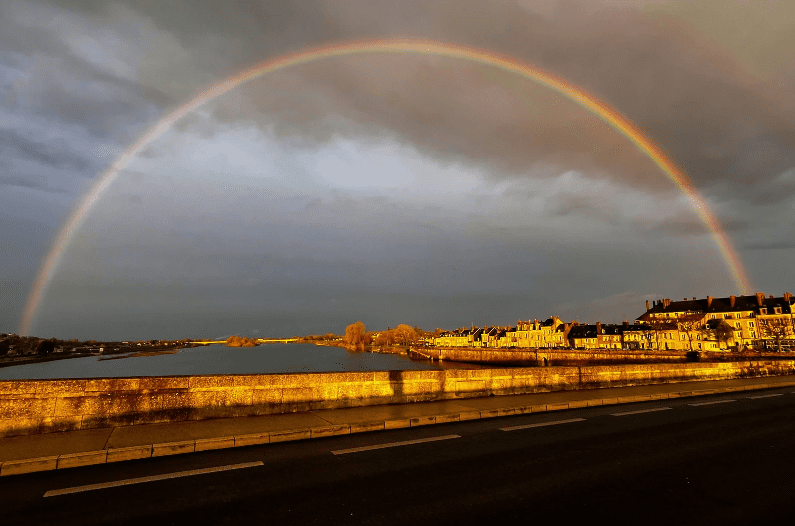
To someone from France, a “hidden gem” is more than an empty place on a tourist’s list. Locals think of it as quiet, special, and not overrun by tour buses. It might be a small French town with a weekly cheese market, or a picturesque village where all the shutters are painted blue. Sometimes it’s a church with ancient murals or a stretch of coast along La Côte Bleue, only locals swim at in July. Authenticity, friendliness, and nature are key. If you find farmers selling their own cider in a tiny village square, that’s a real hidden gem.
Off-the-Beaten-Path vs. Tourist Hotspots: What Sets Them Apart
Tourist hotspots—Mont Saint-Michel, Nice, and Versailles—burst with visitors, lines, and tour guides. While these are magical places, their popularity means shops, restaurants, and even traditions sometimes cater more to travelers than locals. Off-the-beaten-path spots, like the beautiful secret places in the Loire Valley, change the rhythm. There’s room for conversation with shopkeepers, slow walks without dodging crowds, and quiet, starry nights without city lights. These places keep their true taste, showcasing a unique French experience that locals cherish.
1. Éguisheim: The Storybook Village of Alsace

Winding Streets and Colorful Timbered Houses
In the northeast, Éguisheim, a beautiful French destination, looks plucked straight from a fairy tale. Tiny, winding lanes wrap around the village like rings on a tree. Each house competes quietly for the brightest color—sunny yellow, apple green, deep blue. Overflowing flower boxes hang off timbered beams, adding a splash of red and pink all summer. Neighbors greet you with a smile as you wander through this picturesque village. No surprise, it helped inspire Disney’s “Beauty and the Beast.”
The Birthplace of Pope Leo IX
Éguisheim isn’t just charming—it also has roots in history as a picturesque village in the Alsace region. It’s the birthplace of Pope Leo IX, born here in 1002. You can find plaques and an old fountain marking this link to the Middle Ages. The village’s church holds stories that survived centuries of wars and peace, and its annual festivals tie modern life back to this deep, living past, making it one of the best secret travel destinations in eastern France.
2. Collioure: Where the Catalan Spirit Shines

Fauvism and Henri Matisse
On the bright Mediterranean coast, Collioure glows with color and energy, making it a unique place for art enthusiasts. It’s famous among artists, especially Henri Matisse and André Derain, who started the bold Fauvism art movement here. The light in Collioure feels different—sharper, more golden—turning boats and buildings into living paintings. You can step into local galleries and see how artists past and present capture the spirit of the sea and sun, reflecting the beauty of southern France.
Tasting Anchovies and Sea Breezes
Collioure, a beautiful coastal town in southern France, is also known for its food, especially anchovies. Local fishermen have practiced traditional salting methods for generations; tastings are easy to find, paired with chilled white wine or crusty bread. The air, heavy with salt spray and herbs, makes even a quick lunch unforgettable. Outdoor cafés lining the harbor tempt you with plates of seafood, olives, and Catalan specialties, making it a unique place to enjoy the best secret travel destinations.
3. Rocamadour: Clifftop Pilgrimage and Heavenly Views

The Sanctuary Complex
Rocamadour, a French destination, hangs off a limestone cliff in the Lot region, seeming to defy gravity. Since the Middle Ages, it has been a place of pilgrimage, famous for its sanctuary complex. Inside fortress-like walls, you’ll find chapels, churches, and even a Black Madonna statue, believed to grant miracles. Cobblestone stairs connect each level—no elevators here—meaning every view you reach feels well-earned, showcasing the picturesque villages of southwestern France.
Regional Cheeses and Delicacies
Don’t leave Rocamadour, a picturesque village in southwestern France, without tasting the cheese bearing its name. Small, creamy rounds of goat cheese pair perfectly with local honey. Tiny restaurants—some tucked into caves—serve dishes like duck confit, walnut cake, or slow-cooked lamb, creating a beautiful French experience.
4. Conques: Medieval Marvel at the Edge of the Forest
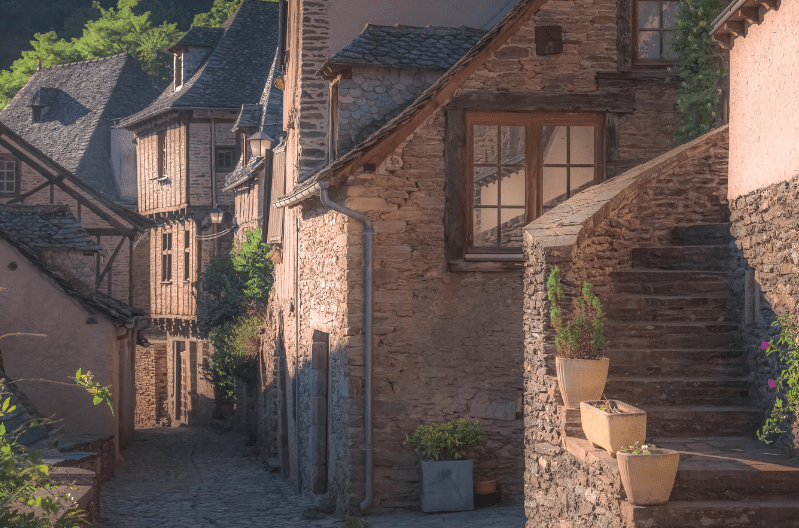
UNESCO Heritage and Relics
Deep in the Aveyron region, Conques is wrapped in green hills and thick forests, making it one of the best secret travel destinations in southern France. Its centerpiece is the Abbey Church of Sainte-Foy, a UNESCO World Heritage site, where pilgrims and travelers have admired its gold and stone walls for a thousand years.
Saint Faith’s Shimmering Treasure
Conques is famous for the treasure of Saint Faith, a golden statue covered in ancient jewels and sparkling gemstones. For locals and visitors, this relic is a rare sight—just ask for a guided visit. The picturesque village, with its narrow lanes, invites slow walks, while nearby streams promise calm afternoons, perfect for a relaxing picnic.
5. Île de Porquerolles: The French Riviera’s Secret Island
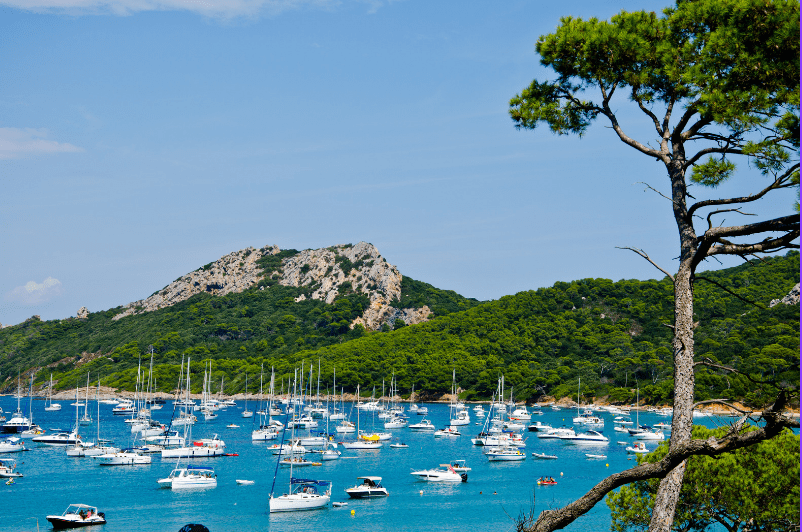
Crystal Beaches Without the Crowds
Most tourists skip the Île de Porquerolles, a picturesque village and one of the best secret travel destinations among the Hyères Islands off Provence. A short ferry ride brings you to white sand beaches, coves with turquoise water, and giant pines swaying overhead. No cars are allowed—only bikes or your own two feet—ensuring a peaceful French experience, even in summer.
Cycle or Hike Through Untamed Nature
Nature here feels wild but welcoming, especially in beautiful places like Corsica. Rental bikes make it easy to explore vineyards, olive groves, and hidden beaches far from the ferry landing. Birds, butterflies, and the whisper of the sea are your only company. Pack a picnic, bring plenty of sunscreen, and soak in the sun-drenched beauty without the usual Riviera crowds.
6. Saint-Cirq-Lapopie: Perched Over the Lot River
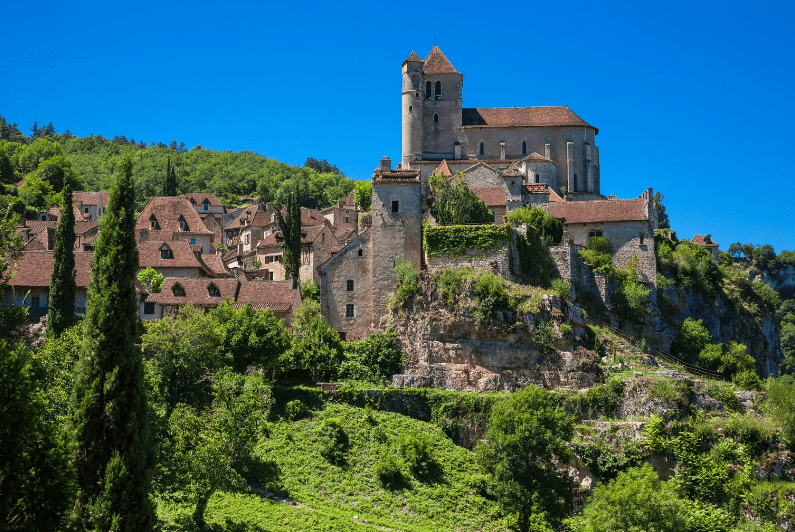
The Legacy of André Breton
Saint-Cirq-Lapopie balances high on a rocky outcrop, overlooking the slow, wide Lot River. This picturesque village, located in southwestern France, won the heart of surrealist poet André Breton, who called it his “sanctuary.” Follow his footsteps past stone houses and small squares; you’ll discover why it inspired so many artists, writers, and dreamers.
Art Galleries and Bohemian Flair
Boutique galleries, hidden in maze-like lanes, showcase paintings, sculpture, and the work of local craftspeople. A bohemian energy fills the cafés and workshops in this picturesque village. It’s all wrapped in scenery that glows gold at sunset, making Saint-Cirq-Lapopie a favorite with creative spirits.
7. Vannes: Brittany’s Walled Wonder
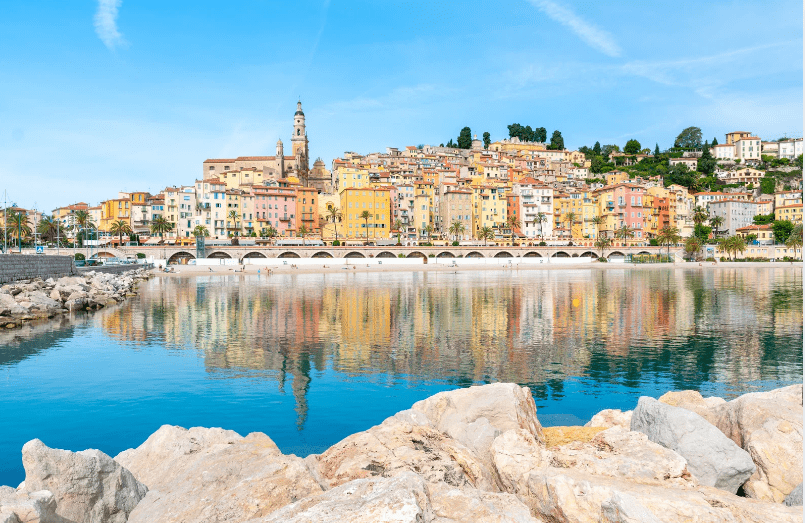
Half-Timbered Houses and Port du Commerce
On the edge of Brittany, Vannes shines as a grand old walled city, reminiscent of beautiful places like those found in the Loire Valley. Its historic heart is marked by colorful half-timbered houses, each leaning into the next. Walk the old ramparts for dreamy harbor views, similar to the stunning sights of coastal towns along La Côte Bleue.
Breton Festivals and Fresh Seafood
Vannes is alive with fest-noz—night festivals packed with music, dance, and crepes, making it a unique place to experience Breton culture. Local restaurants serve oysters, mussels, and scallops pulled straight from the bay, complemented by Breton cider, tart and bubbly, for a beautiful French experience.
8. Monts d’Arrée: Brittany’s Mythical Mountains
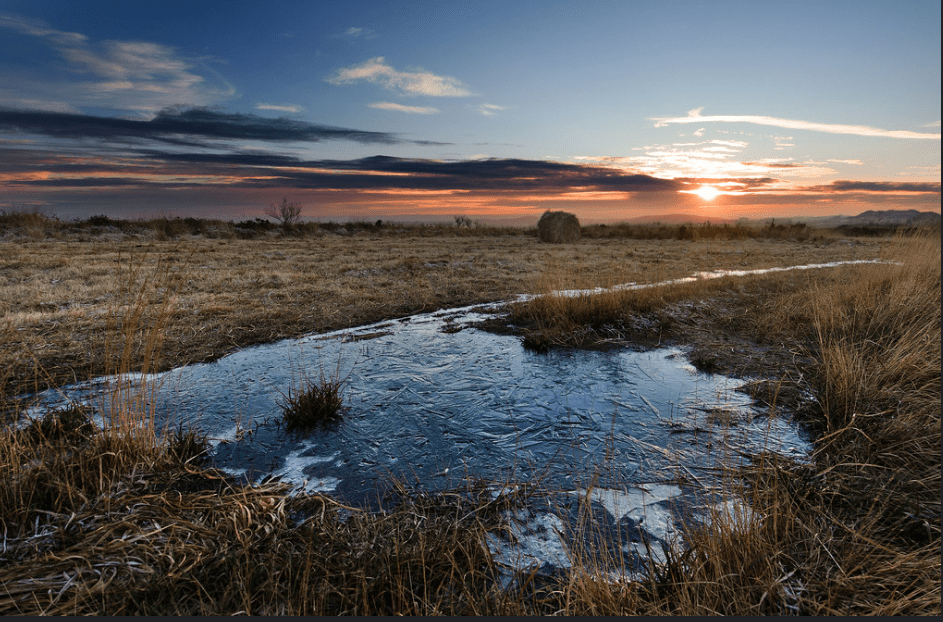
Legends, Lakes, and Dramatic Scenery
The Monts d’Arrée feel timeless, set apart by heather-clad hills and mysterious bogs. Folklore says these dramatic peaks are home to korrigans, little fairy creatures of Breton myth, while the beautiful secret places, including tiny chapels and mirror-like lakes, invite hikers to explore under brooding skies.
Strolling Among Heather and Gorse
Past purple heather and golden gorse, well-marked trails in Brittany open to vast, open views. Bring strong boots and a camera to capture the beautiful places. You might see wild ponies or stop to pick wild blueberries, experiencing Brittany’s rugged magic.
9. Saorge: Balcony Village Over the Roya Valley
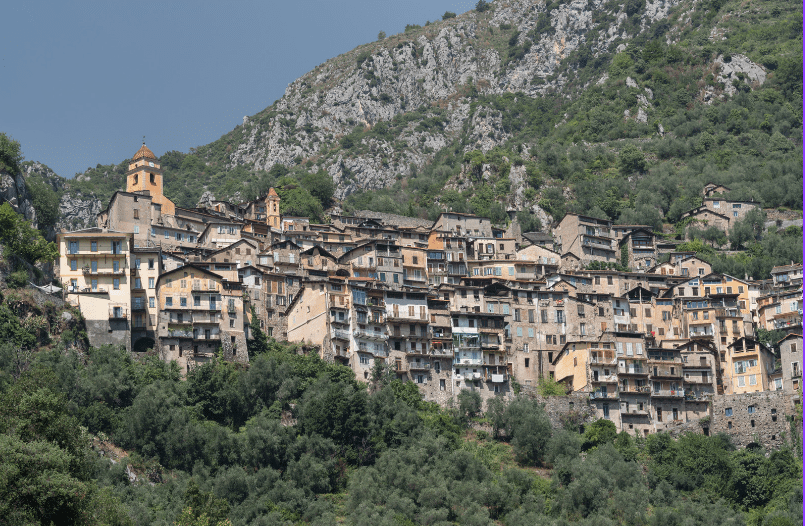
Baroque Monastery and Lemon Groves
Saorge, a picturesque village stacked high over the Roya Valley near Italy, features thin, terraced streets that lead to a Baroque Franciscan monastery, renowned for its painted ceilings and peaceful cloister. Lemon and olive trees twist along the balconies, their fruit bright against the old stone walls, creating a beautiful place in southern France.
Gateway to Mercantour National Park
Nature-lovers will find Saorge the perfect starting point for hikes into Mercantour National Park, a beautiful place with herds of ibex, trickling streams, and rare alpine wildflowers. The village itself is a picturesque village, preserved in pastel colors and warm smiles.
10. Salers: Timeless Stone in the Heart of Auvergne

Volcanic Landscapes and Cow Cheese
Salers, a picturesque village rising from the heart of the extinct volcanoes of Auvergne, boasts ancient stone houses and pointed roofs designed to withstand wind and snow. This beautiful place is surrounded by mountains shaped by ancient eruptions, laced with lush gardens and wildflowers. Additionally, Salers is renowned for its famous cheese, made from the rich milk of local cows grazing on high mountain grass.
Voted One of “Les Plus Beaux Villages de France”
Salers sits proudly on the list of “Les Plus Beaux Villages de France”—the most beautiful villages in the country. Every view, from the cobbled main square to distant volcanoes, speaks of a place lost to time. In spring and summer, flower shows and cheese fairs fill the streets of this picturesque village with color and joy, making it a unique place to experience the charm of southwestern France.
Where to Stay: Cozy Guesthouses and Family-Run Inns
The best way to soak up local flavor in beautiful places is to stay in a guesthouse or family inn. Many of these secret spots, including charming locations in the Loire Valley, have “chambres d’hôtes” where owners greet you by name. You might wake up to farm-fresh eggs, homemade jam, or warm croissants. Try unique stays like restored barns in Auvergne, vine-covered cottages in Alsace, or beach shacks on Porquerolles.
Local Eats: Regional Dishes You Won’t Find Elsewhere
Eating local is part of the adventure in beautiful French destinations. Every hidden spot has its specialty, from anchovy tart and Catalan stews in Collioure to gooey aligot in Salers. In Brittany, don’t miss out on buckwheat galettes paired with cider. Additionally, try the nutty Rocamadour goat cheese and honey straight from mountain hives in Monts d’Arrée. Markets are the heart of local food, so plan to picnic with fresh bread, fruits, and cheeses while exploring picturesque villages. Restaurants away from tourist lines often let you chat with the chef about today’s special.
Timeless Traditions: Fêtes, Markets, and French Savoir-Faire

Traditions keep these French destinations vibrant. In Vannes, fest-noz dances bond friends and strangers. Saint-Cirq-Lapopie celebrates artists with open gallery nights. Autumn fêtes mark grape harvest in Alsace, a highlight for any wine tasting enthusiast. Ghostly candlelit processions wind through Conques. Weekly markets—tables stacked with fruit, cheese, soap, and wine—showcase regional flair and the French art of living well. Don’t miss small-town rituals like bread deliveries by bicycle or pétanque matches in village squares.
How to Travel Respectfully and Sustainably in Hidden Spots
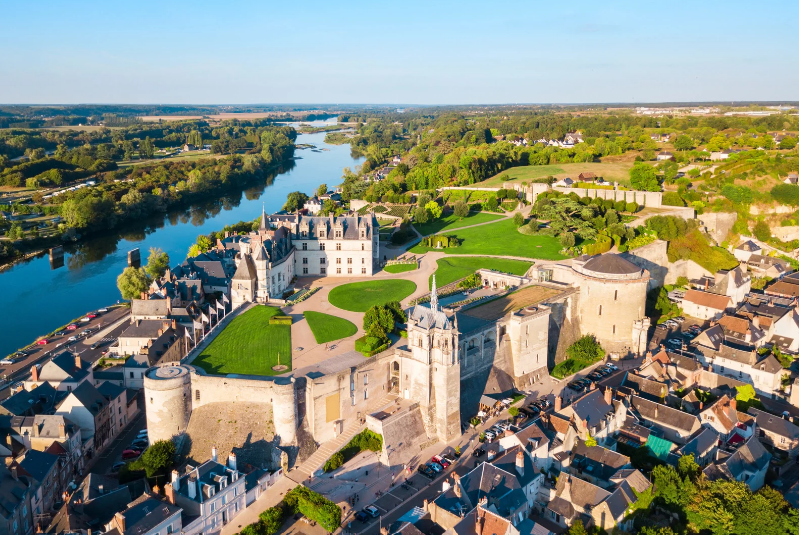
Travelers can help keep these beautiful places special. Respect quiet hours, walk or bike instead of driving, and use refillable water bottles while exploring unique places like the Loire Valley. Choose guesthouses that support local agriculture, and skip single-use plastics. Stay on marked trails to protect fragile plants, especially in areas like Monts d’Arrée or Porquerolles. Ask permission before photographing locals. Buy direct from farmers or artisans, and leave no trash behind. A smile and a bit of French—“bonjour” or “merci”—always go a long way.
Planning Your Trip: Handy Tips from Insiders
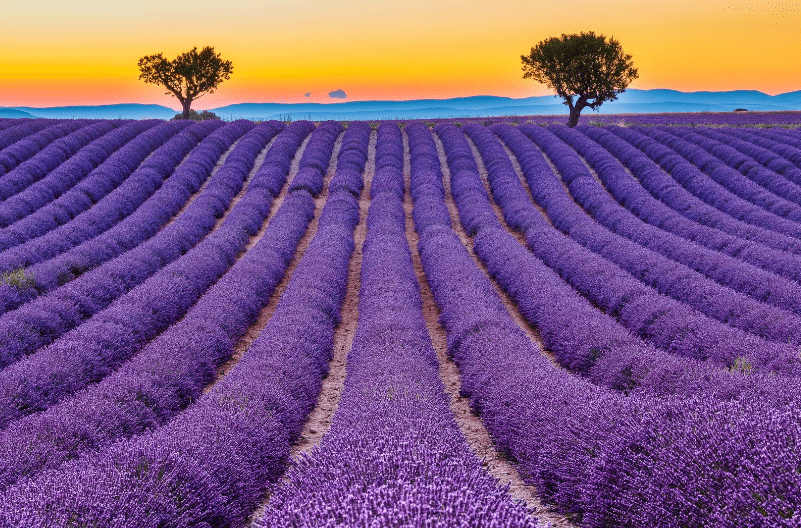
Best Times to Visit Each Gem
Timing matters when exploring beautiful places like Provence and Alsace, where spring and early autumn offer soft weather without crowds. Aim for May to June or September to October to experience the charm of picturesque villages. Each French town often has its own festival or food season, so check local calendars before booking your trip.
Getting Around Without the Stress
Car rentals are the best way to reach beautiful secret places like Porquerolles, but French trains also go surprisingly far. In picturesque villages, bikes are king. Many towns are connected by local buses during market days, especially in regions like Provence or the Loire Valley. Pack light, bring good walking shoes, and allow extra time—buses and trains sometimes run on “village time.” Always check holiday schedules, and don’t stress if you’re late. Local drivers or hosts are often happy to help with directions or last-minute rides.
Conclusion: Step Off the Beaten Path and Rediscover France
Stepping beyond France’s tourist trails means more than just seeing new places—it means experiencing the country’s soul. Small towns and picturesque villages invite you to slow down, savor every taste, and listen to stories not found in guidebooks. Hidden gems in France, such as those in the Loire Valley and along the Côte d’Azur, glow with beauty, warm welcomes, and traditions passed down for generations.
The next time you’re planning a French adventure, skip the long lines and look for places that locals cherish, like the charming village of Avignon. Book a cozy guesthouse, savor a meal made from local recipes, and join a festival or market. Bring home memories woven with laughter and true connection.
Open your map, trace a route beyond the obvious, and get ready to uncover the France that most visitors miss, including the beautiful secret places in the Dordogne Valley. Let curiosity guide you, and you’ll see how much more the country has to offer—one hidden gem at a time.
Got questions about Hidden Gems in France? Here are the answers travelers look for most
Q1. What are the best hidden gems in France away from the crowds?
The best hidden gems in France include Annecy, Colmar, Riquewihr, Rocamadour, and Étretat. These towns and villages offer stunning scenery, medieval charm, and peaceful streets. Each spot lets you experience authentic French culture without the tourist rush.
Q2. Where can I find hidden gems in France near Paris?
Near Paris, hidden gems in France include Provins, Barbizon, and Fontainebleau. These towns are rich in history, art, and nature. You can reach them in under two hours by train. They are perfect day trips for travelers seeking authentic charm.
Q3. What hidden gems in France are great for food lovers?
Food lovers will enjoy hidden gems in France, such as Lyon’s bouchons, Bayonne for Basque cuisine, and Dijon for mustard. In Alsace, small wine villages serve traditional dishes. Brittany offers fresh seafood and crêpes in quaint seaside towns.
Q4. Are there hidden gems in France along the coast?
Yes, hidden gems in France include Cassis, Collioure, and Île de Ré. These seaside escapes offer colorful harbors, quiet beaches, and seafood dining. They are less crowded than Nice or Cannes but just as beautiful and authentic.
Q5. What are some hidden gems in France for wine lovers?
Hidden gems in France for wine lovers include Chablis, Saumur, Cahors, and Bandol. These regions produce world-class wines but attract fewer visitors than Bordeaux or Burgundy. You can tour vineyards, taste unique varieties, and enjoy charming rural settings.
Q6. Which hidden gems in France are perfect for nature lovers?
Nature lovers should visit Verdon Gorge, Camargue, and Mercantour National Park. These hidden gems in France offer mountains, rivers, wetlands, and wild horses. Each destination is ideal for hiking, kayaking, and bird watching in peaceful, natural settings.
Q7. What hidden gems in France are great for history lovers?
History lovers will enjoy Carcassonne, Albi, and Pérouges. These hidden gems in France have medieval walls, cathedrals, and cobblestone lanes. Each site feels like stepping back in time. You can explore castles, churches, and museums without large tourist groups.
Q8. Are there hidden gems in France for art lovers?
Yes, art lovers will love hidden gems in France like Arles, Menton, and Saint-Paul-de-Vence. These towns feature colorful murals, artist studios, and small galleries. Many famous painters lived here, including Van Gogh and Matisse.
Q9. What hidden gems in France are best for romantic trips?
Romantic hidden gems in France include Annecy, Colmar, and Eguisheim. These fairy-tale towns have canals, vineyards, and cozy inns. They’re perfect for couples who want charm, quiet, and scenic beauty away from tourist crowds.
Q10. Are there hidden gems in France for families?
Families can enjoy hidden gems in France like Dinan, Amboise, and La Rochelle. These towns have castles, aquariums, and safe walking streets. Kids love exploring medieval towers and seaside ports while parents enjoy relaxed, family-friendly settings.
Q11. What hidden gems in France are budget-friendly?
Budget-friendly hidden gems in France include Limoges, Besançon, and Perpignan. These towns are affordable compared to Paris or Nice. You’ll find cheap lodging, tasty regional food, and free or low-cost cultural attractions.
Q12. Are there hidden gems in France with beautiful villages?
Yes, hidden gems in France include Saint-Cirq-Lapopie, Gordes, and Roussillon. These villages sit on cliffs or hills and feature stone houses, narrow lanes, and stunning views. Each one looks like a storybook scene.
Q13. What hidden gems in France are ideal for road trips?
Hidden gems in France for road trips include the Dordogne Valley, the Alsace Wine Route, and Corsica. These areas offer winding drives, scenic landscapes, and charming villages. They’re perfect for travelers who enjoy exploring at their own pace.
Q14. Which hidden gems in France are best for photography?
For photography, hidden gems in France include Étretat cliffs, Mont Aiguille, and the Camargue. These locations feature dramatic coastlines, unique mountains, and flamingos. Each destination offers unforgettable views and colorful backdrops for stunning photos.
Q15. What hidden gems in France are UNESCO World Heritage Sites?
Hidden gems in France that are UNESCO sites include Provins, Vézelay, and Amiens Cathedral. These towns are rich in history, architecture, and cultural value. They are less famous but highly rewarding for curious travelers.
Q16. Are there hidden gems in France for winter travel?
Yes, hidden gems in France for winter include Chamonix, Megève, and Les Gets. These alpine towns offer cozy chalets, ski slopes, and snowy scenery. They are quieter than larger ski resorts but just as beautiful.
Q17. What hidden gems in France are good for summer trips?
Summer travelers should visit Porquerolles Island, Cassis, and Corsica. These hidden gems in France have beaches, hiking trails, and fresh seafood. Warm weather makes them perfect for outdoor adventures and seaside relaxation.
Q18. Which hidden gems in France are off the beaten path for locals?
Locals love hidden gems in France like Uzès, Pézenas, and Saintes. These towns are filled with weekly markets, Roman ruins, and relaxed squares. They offer authentic French life without tourist crowds.
Q19. Are there hidden gems in France that are easy to reach by train?
Yes, hidden gems in France accessible by train include Chartres, Reims, and Rouen. These cities are under two hours from Paris. Each offers cathedrals, local food, and charming streets, perfect for quick trips.
Q20. What hidden gems in France are best for adventure travelers?
Adventure travelers will enjoy Verdon Gorge, Corsica’s GR20 trail, and Pyrenees hikes. These hidden gems in France are perfect for climbing, trekking, and kayaking. They combine thrilling outdoor activities with stunning natural beauty.


